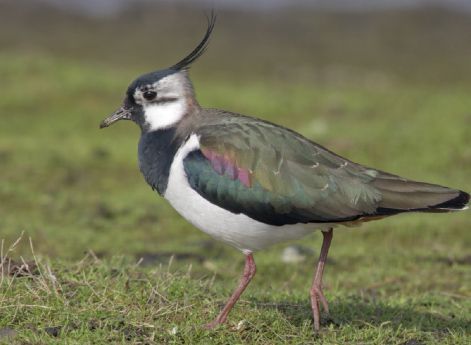EVERY year, Belfast’s last breeding lapwings nest on a scrap of waste ground down by the docks. It seems incredible in these times when people demand access to all areas that these magnificent birds simply lay their eggs on the ground, with the only method of concealment being the colour of the eggs themselves.
Dúlra watches in awe from afar each year as the mothers – three of them – incubate their eggs, sitting still in the open ground in front of the giant Belfast Harbour Film Studios. The dads, meanwhile, patrol the surrounding area, fending off crows and birds of prey. All predators, in fact, except their greatest one – us.
Thankfully, there aren’t many passers by here as Giant’s Park is still a private area under the control of the City Council.
A few years back Dúlra was birdwatching there when he first came across the lapwing’s eggs – four beauties on a small platform of straw. He had seen the birds here but never imagined they were actually nesting – it was almost too good to be true.
The authorities were contacted to make them aware of nesting birds and indeed action was taken to keep people away. The birds successfully raised their broods – which takes 70 days – and you could even see the lanky chicks running around under the protective watch of their parents.
But not this year.
Within the last month, building work commenced at the site. A digger has moved in. Mounds of stones were dumped along with industrial-sized pipes, presumably to be laid underground. When Dúlra passed by on Monday, various workmen were busy digging up soil. The lapwings had vanished.
The birds had been spotted there in early April – they were obviously about to breed once more – but the diggers put a stop to them.
GOING, GOING... Lapwings have fled Giant’s Park as workers moved in – on this spot these eggs (right) were laid in the recent past
It reminds Dúlra of the demise of the city’s corncrakes 50 years earlier. They bred in fields not just on the Belfast Hills but all over the city in wild areas: down at the Bog Meadows, Smicker’s Field, where Coolnasilla is now; that famous call used to echo down Dúlra’s street in Andersonstown every summer. Fifty years earlier again they were so commonplace they were breeding in the grass in front of Inst school in Belfast city centre. Today that’s a lawn which is nice on the eye, but of course devoid of breeding birds.
The corncrake vanished in a few decades and now we spend millions trying to encourage them to return.
The lapwing was named Ireland’s national bird in 1990, a tragic irony considering how the county treated it in the subsequent three decades.
It’s like it was given the honour not to finally help it thrive here, as it has always done, but because we thought it was pretty.
And in years to come we may well be spending millions trying to encourage it back to breed. But in 2023, we think nothing of destroying its only Belfast breeding ground.
A Lapwing
The lapwings used to be as common in our fields as meadow pipits are today, those wee birds that hide their nests in tufts of grass. They nested all around Belfast, so common that boys minding cattle in the Belfast Hills used to collect their eggs for dinner. Their Irish name, pilibín, evokes an intriguing historical past – the ‘wee Philip’ was named after the Spanish king in the sixteenth century who wore a feather in his cap, much like the lapwing’s crest. He was for a while King of Ireland and got a county named after him – King’s County, now Offaly.
Back in 2021, Dúlra wrote: “The problem is that we don’t give up ANY land to lapwings to safely nest on. We want it all – to build on, farm on or just walk on.”
It’s not of course that we can’t develop Giant's Park for our own needs. But we should at least be aware of the rare breeding birds there and take action to somehow protect them.
In the midst of a global nature and environmental crisis, we’re letting another species slip through our fingers.
And we can't even say we weren't told.
• If you’ve seen or photographed anything interesting, or have any nature questions, you can text Dúlra on 07801 414084.






